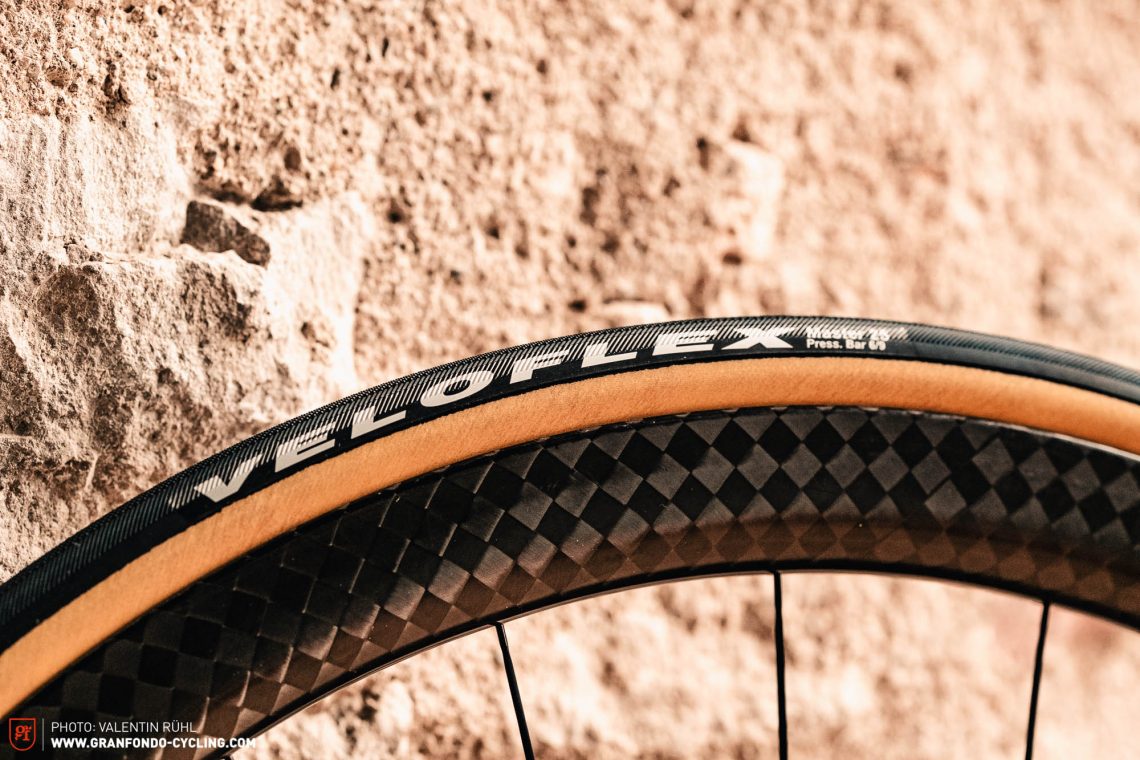What’s the best and most cost-effective upgrade you can buy for your road bike? A perfect tire. Nothing is as crucial for your safety as a good connection with the road and good puncture resistance when you’re blasting along at full speed. We picked up six of the most popular road bike tires and tested them for you, carving through tight switchbacks, riding over rough, broken tarmac and generally abusing them in a number of brutal lab tests. Read on to find out which tire secured our coveted Best in Test title.
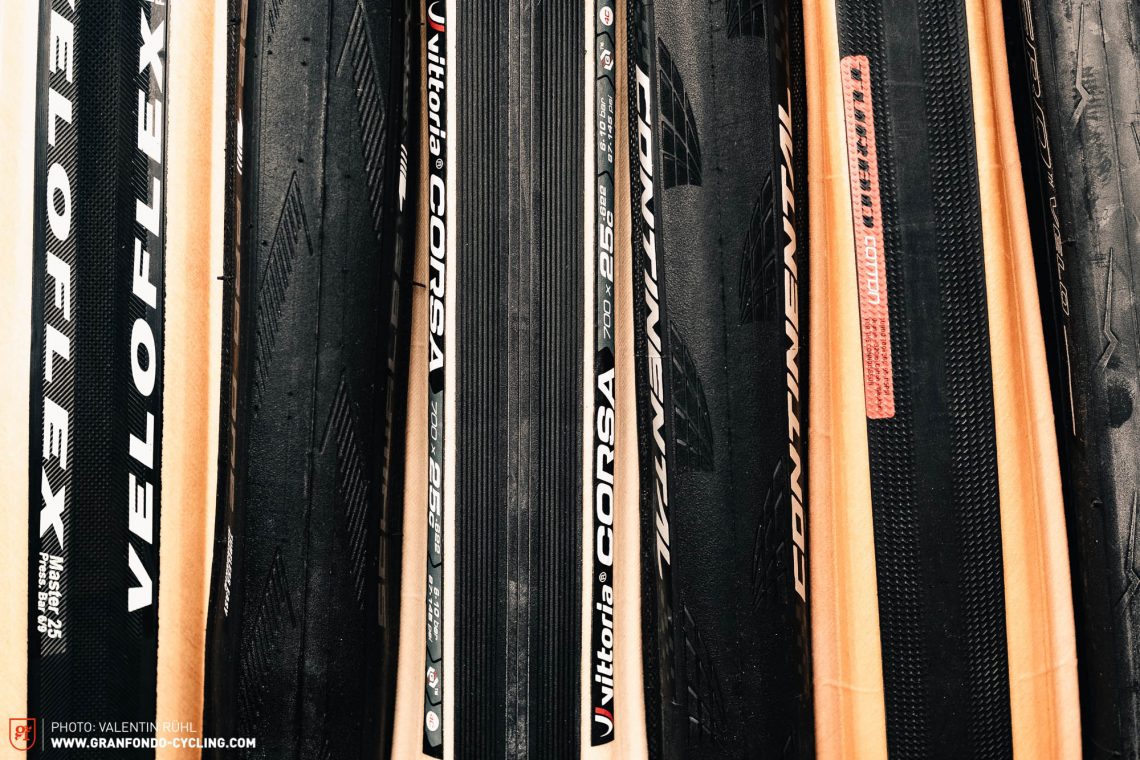
If you were to ask your riding buddies which is the best road tire ever, you’d likely hear the same few models repeated again and again and no doubt, the Continental GP4000 would feature heavily among them So what makes the best road tire? “Good puncture resistance and great rolling characteristics” seem to be the main priorities for most riders. If you then asked those same people how many of them actually tried out different tires before choosing their favourite, you’d be in for a long silence. But that’s ok, because why would anyone want to change a tire they’re perfectly happy with?
While the industry tries to win the favour of potential customers with promises about performance, a growing number of technologies and miraculous materials are making the choice ever harder and more confusing, to say the least. To dig deeper into this chaos, we tested six of the most popular road tires both on the road and in the lab to find the best all-round road bike tire for you.
What makes a good road bike tire?
At first, you’d expect the requirements for a good road tire to be fairly simple. But once you start looking around, even in your own small circle of friends, you’ll realise that there are just as many expectations as there are riders. Some of us get on our bikes sporadically and only ride when the sun’s out. Others sign up for races and Gran Fondos on a regular basis or love testing their limits on challenging alpine passes. Some of us don’t even stop when the tarmac ends, taking our racers onto rough gravel paths with bags strapped to the bike.
In our search for the best road bike tire, we considered all these factors and scenarios, and aimed to find an optimal all-rounder. This tire should cover as wide a range of applications as possible, offer good puncture-resistance, comfort and great rolling characteristics and above all, inspire lots of confidence with excellent grip in every situation!

Tire size
When thinking about racing tires, you’d expect a clearly defined size range, with a spectrum extending from the (almost) antiquated 23 mm to wider 28 mm tires. And that’s it, right? Actually, it isn’t. Whilst an increasing number of bike manufacturers are using 650B or 27.5″ wheels to match the proportions of smaller frame sizes, modern frame concepts with disc brakes offer tire clearances of up to 30 mm.
For reasons of comparability and compatibility, our test features only 700C, 25 mm tires to reflect current standards. We had only one exception in our test: the Specialized S-Works Turbo Cotton. This tire is only available in 26 mm, but we thought it would be a shame to exclude such a popular model from our test, so we decided to bend the rules a little…
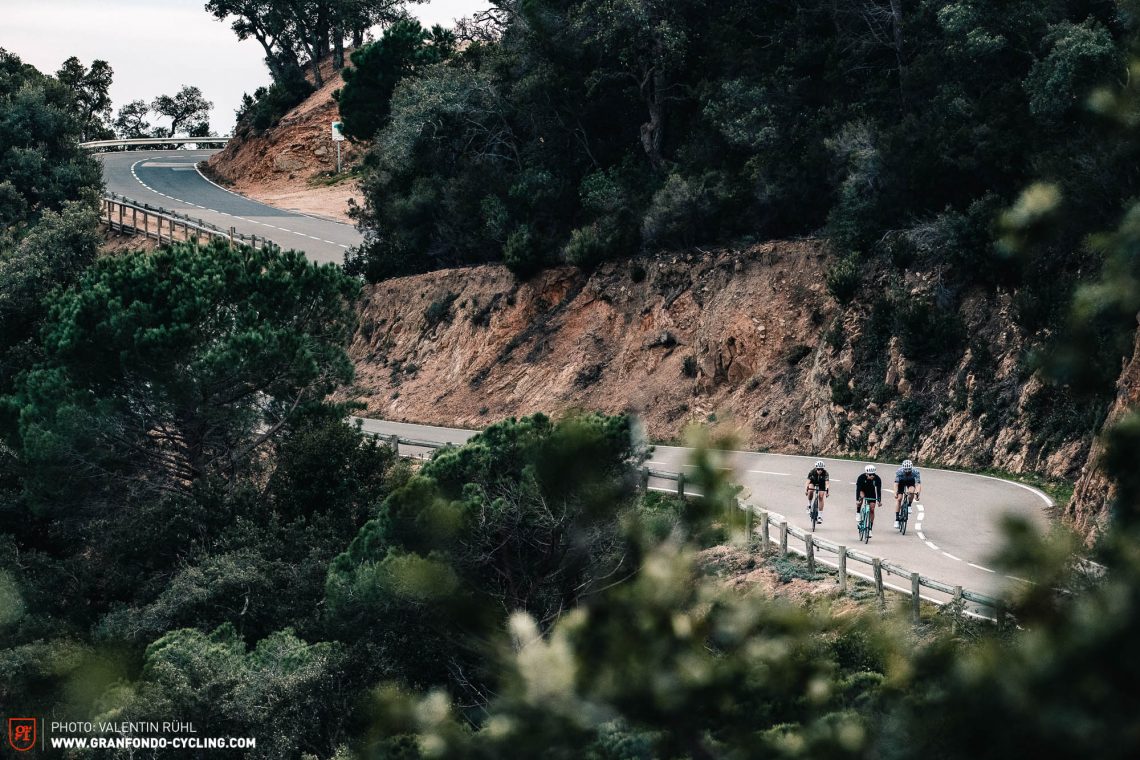
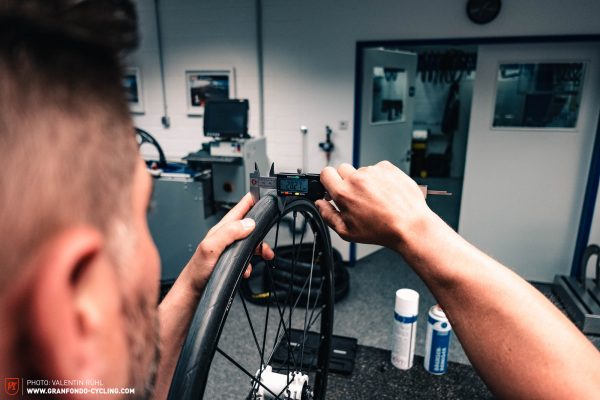
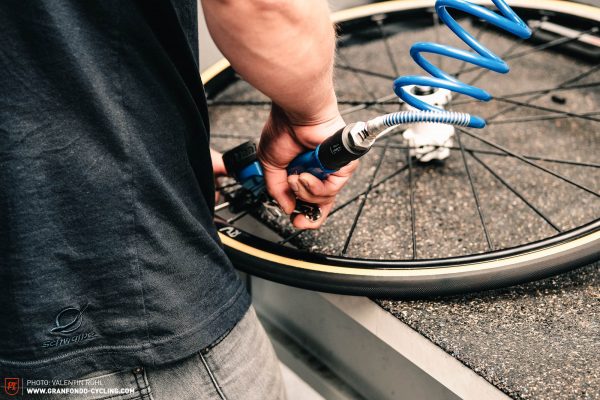
What do the different tire dimensions mean?
Anyone who hasn’t yet gone down the rabbit hole that is tires, will most likely be scratching their heads over the various size classifications. In the pursuit of clarity, ETRTO (European Tyre and Rim Technical Organization) introduced the European tire and rim standard. For example, the ETRTO size classification “37-622” indicates the width (37 mm) and the inner diameter (622 mm) of the tire. Using this designation makes it easy to match the tire to the correct rim size.
The inch classification (e.g. 28×1.40) indicates the approximate outer diameter (28″) and tire width (1.40″). Using inches is neither precise nor clear. For example, tire diameters of 559 mm (MTB), 571 mm (triathlon) and 590 mm (Dutch touring bikes) are all labelled 26″. Tyres with diameters between 622 and 635 mm are both labelled 28” Curiously, tires with an inner diameter of 630 mm are labelled 27″. These classifications actually originate from the times of spoon or plunger brakes, where the outer diameter of the wheel had to fit the brake on the bike. Depending on tire width, there were different standards for the inner diameter. More recently 27.5″ was added to the list of current sizes. These have an inner diameter of 584 mm and in a textbook case of old is new again, are also known by the old French size designation 650B.
The French size specification (e.g. 700x35C) indicates the approximate outer diameter (700 mm) and tire width (35 mm). The letter at the end indicates the inside diameter of the tire. In this case, the C stands for 622 mm.
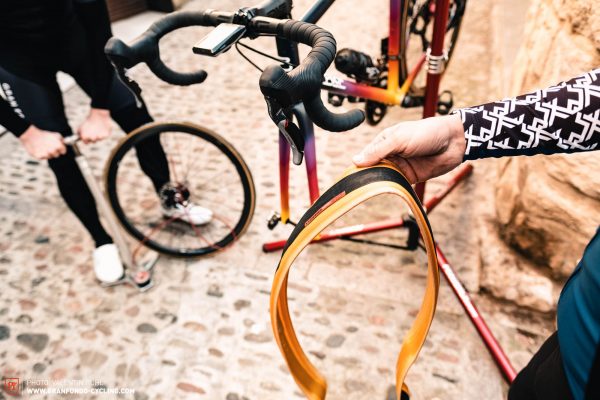
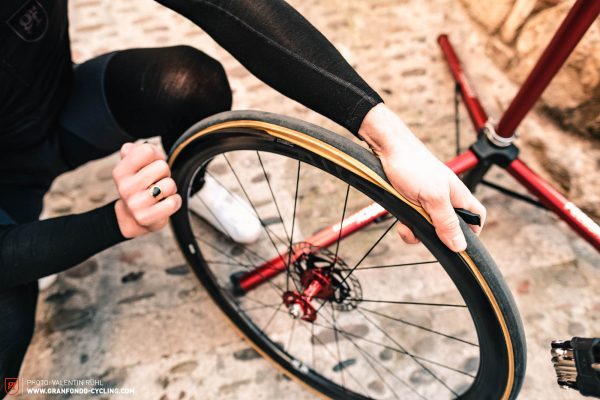
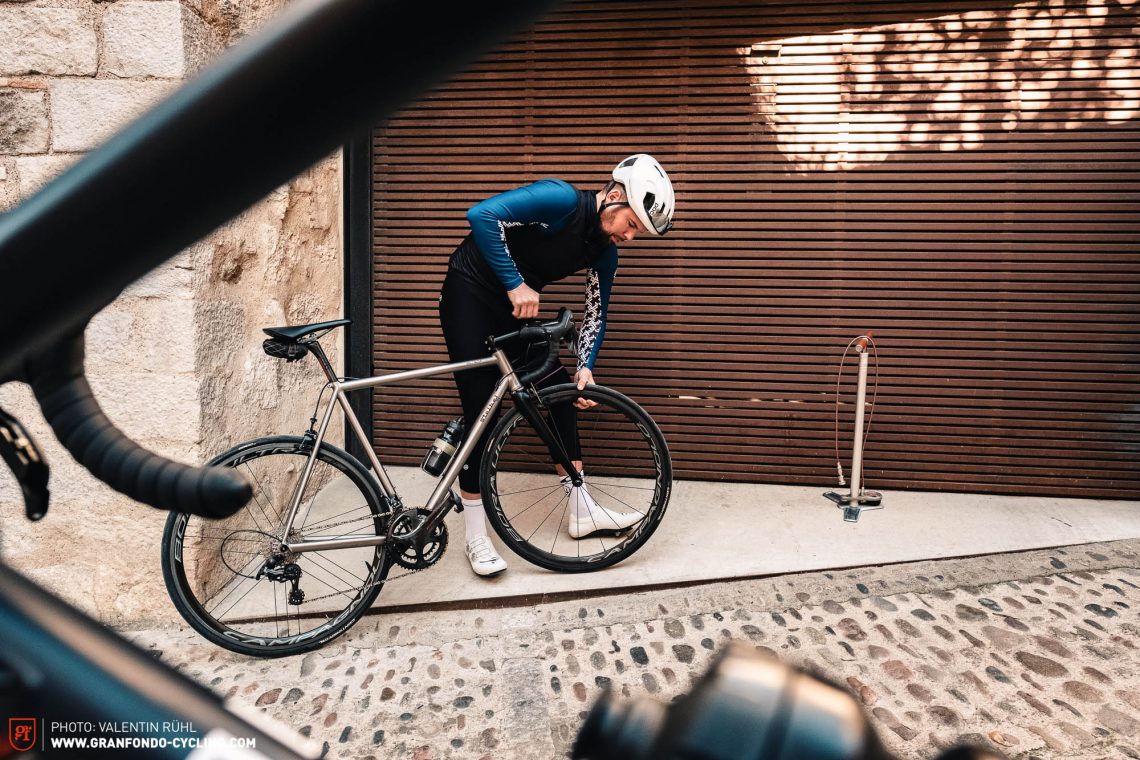
So far, so good. But what happens to all these standards once the tire is fitted? Due to the varying dimensions of different rim models, the width of the tire can actually vary according to the inner rim width. As a rule of thumb, as the inner rim width increases by 3 mm, the tire becomes 1 mm wider. Different tire designs can also lead to a more or less pronounced expansion of the tire with increasing air pressure. This means that the exact tire volume can vary depending on the model, even if the size classification is the same.
What are tires made of?
To help you navigate the jargon, the following diagram illustrates the basic construction of a bicycle tire. Tyre construction varies from manufacturer to manufacturer and of course from model to model depending on the performance priorities and focus.
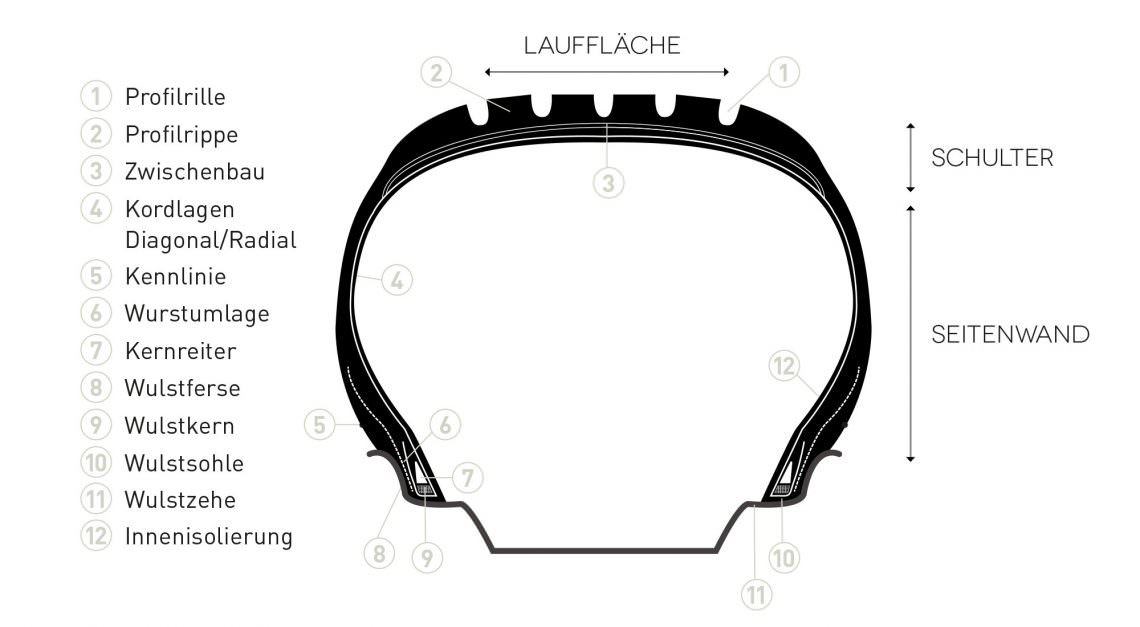
Let’s take a look at the difference between classic clincher tires and so-called open tubulars – effectively they are very similar but open tubulars will generally use higher-end materials and a different manufacturing method compared to standard vulcanised clinchers. Both types are fitted to “clincher” rims, which have hooked flanges that interface with the bead of the tire to hold it in place and prevent it from popping off the rim. Clincher tires are vulcanised, which results in a stiffer sidewall and thus a lower level of comfort. On open tubulars, the tread is glued by hand onto a cotton carcass, which makes for a softer sidewall and provides a higher level of comfort. Be careful though! Some open tubular tires are not approved for use on carbon rims. According to manufacturers, this is due to the rougher inner surface of the carbon rims which could damage the sidewall and tear the tire.
What is the perfect tire pressure?
Spoiler alert: unfortunately there is no such thing as THE perfect tire pressure. Due to a multitude of factors, there’s no simple answer to this question. Manufacturers usually recommend a pressure range for their tires, but that only puts you in the ballpark. In reality, the ideal pressure varies depending on the tire model, dimensions and the terrain you’re riding on.

Auf perfektem, glattem Asphalt gilt: Je höher der Luftdruck, umso geringer ist die Verformung und damit der Rollwiderstand. Wird es rauer und Our test shows that it’s worth playing around with tire pressures and in some cases even to take the manufacturer’s recommendations with a grain of salt. The best way to find your ideal pressure is to ride on a well-known route experimenting with different settings.
In general, on a perfectly smooth surface, the higher the air pressure, the less the tire deforms and thus the lower the rolling resistance. However, road surfaces are rarely perfectly smooth. On rough tarmac and uneven surfaces it’s the other way round: the lower the air pressure, the lower the rolling resistance. A tire with less air pressure can better adapt to irregularities and glide through them. That’s exactly the strategy the pros use at the spring classics in Roubaix or in the Flanders.
When it comes to finding the ideal tire pressure for your road bike, the golden rule is to strike an optimal balance between comfort and speed. But since we all have a different idea of comfort and we all ride on different roads and in very different conditions, we recommend playing around with different pressures to find your ideal setting.
Our recommended starting points for 25 mm tires are:
- Smooth tarmac: 7 bar front and 7.5 bar rear, for a fast-rolling bike
- Rough surfaces/cobbles or increased comfort: 6 bar front and 6.5 bar rear

Compared to large-volume gravel and mountain bike tires, the smaller air volume of narrow racing tires, means they have to run at higher pressure to avoid annoying pinch flats (where the inner tube is pinched between the tire and rim due to an impact). Of course, keeping tires inflated properly also protects and “cushions” your expensive carbon wheels. It’s worth bearing in mind that you can run wider 28 or 30 mm tires with a lot less pressure than narrow 25 mm tires without losing speed or compromising puncture resistance.
It is also important to note that tires with less volume have more rolling resistance at the same pressure. Narrow tires have to deform more than large volume ones to support the weight of the rider. In order to create the same size contact patch, they have to flatten out more, flexing the sidewalls. This repeated flexing makes up part of the energy lost to rolling resistance. While it can sometimes be met with scepticism, wide tires, despite any cries to the contrary, roll more easily than narrow ones! This means that, at equal pressure, a 25 mm tire rolls faster than a 23 mm model. However, this calculation doesn’t take into account aerodynamics. Right now, 28 mm tires seem to be hitting the sweet spot of comfort and performance. Whilst 30 mm tires can offer yet more comfort, the wide profile makes them less aerodynamically efficient and thus not necessarily faster than 28 mm tires. Moreover, classic rim brake designs only provide limited tire clearance, but modern disc brake bikes are offering more flexibility in the tire sizes you can fit in your frame.
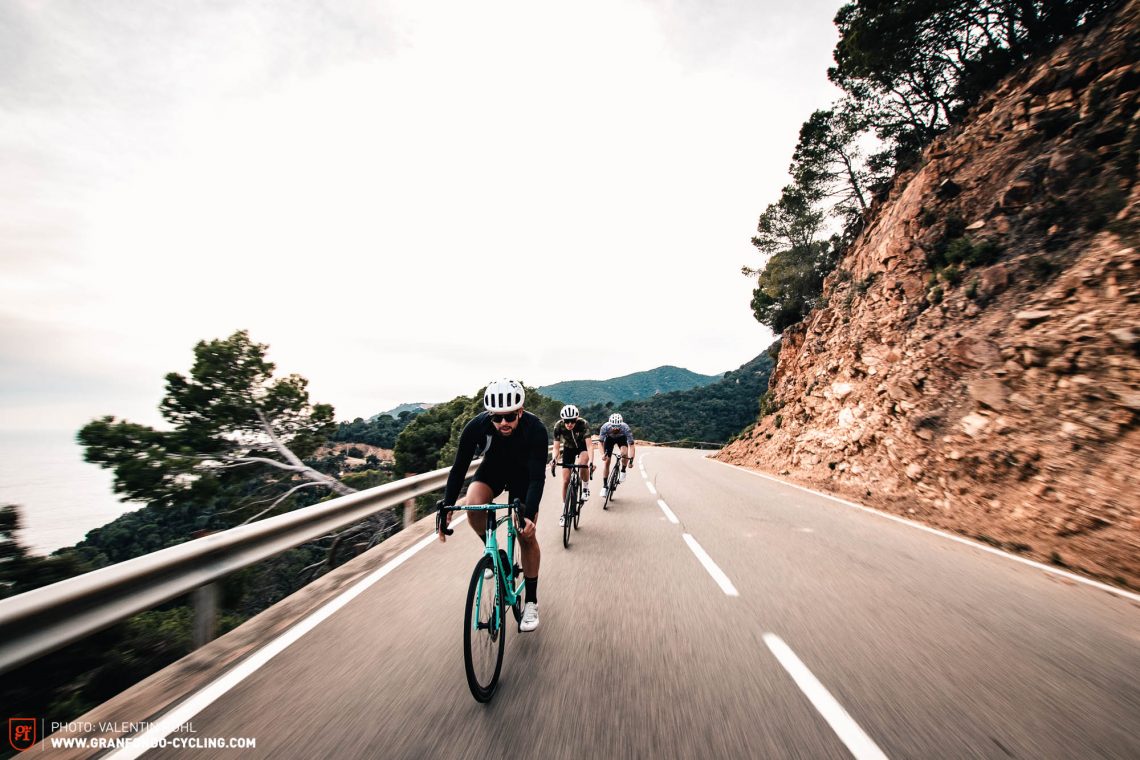
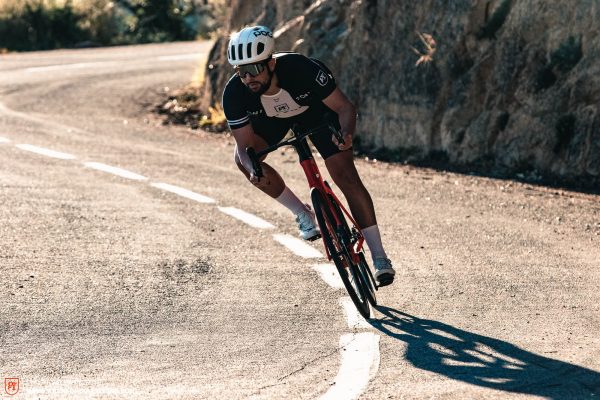
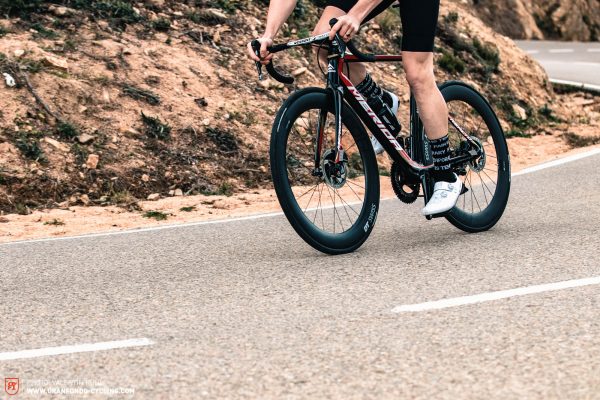
To ensure consistent performance, we recommend checking tire pressure at least once a week. Even the best inner-tubes and tubeless systems tend to lose pressure over time. There are two reasons for this. Inner tubes have very thin walls and bicycle tires require much higher pressures than those of a car. As such, a pressure loss of 1 bar per month is considered normal. Furthermore, pressure loss is significantly higher when running high tire pressures.
Our test field
| Name | Category | Width2 | Internal rim width | Ideal pressure | Weight1 | Price | Made in |
|---|---|---|---|---|---|---|---|
| Continental Grand Prix 5000 700 x 25C / 25-622C | Clincher | 25.6 mm | 18.2 mm | 6.5-8.5 bar | 216 g | € 62.90 | Germany |
| Pirelli P ZERO Velo 700 x 25C / 25-622C | Clincher | 26.4 mm | 18.2 mm | 6-7.7 bar | 208 g | € 42.99 | France |
| Schwalbe Pro One Evo 700 x 25C / 25-622C | Clincher | 26.5 mm | 18.2 mm | 5-7.5 bar | 241 g | € 69.90 | Indonesia |
| Specialized Turbo Cotton 700 x 26C / 26-622C | Open Tubular | 26.4 mm | 18.2 mm | 6.5-7.3 bar | 239 g | € 61.90 | Thailand |
| Veloflex Master 25 700 x 25C / 25-622C | Open Tubular | 25 mm | 18.2 mm | 6-9 bar | 223 g | € 39.00 | Italy |
| Vittoria Corsa G+ 700 x 25C / 25-622C | Open Tubular | 26.6 mm | 18.2 mm | 7-10 bar | 257 g | € 59.95 | Thailand |
1 The actual weight was checked against the manufacturer’s indications and averaged across all tires of the same model we tested.
2 The actual width was checked against the manufacturer’s indications and averaged across all tires of the same model we tested.
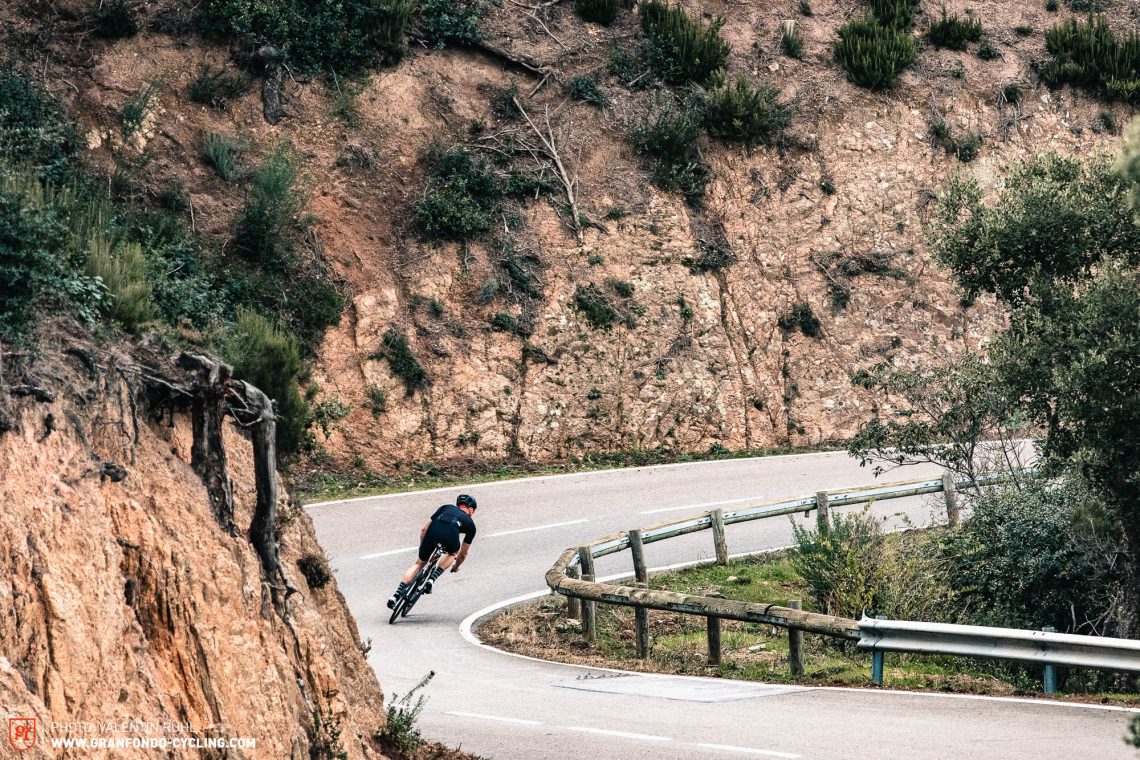
Test criteria
As mentioned, our aim in this group test was to identify the best all-round road tire. In order to test factors such as the rolling resistance and puncture resistance of each tire without riding hundreds of thousands of test kilometres, we teamed up with Schwalbe’s engineers and checked into their high-tech tire-lab to accelerate the process. Isolated from the outside world, we measured, analysed and talked shop.
To determine the rolling resistance on compact surfaces, we mounted the tires on the same rim with the same pressure and tested them at 30 km/h on the test bench, one after the other. Next, we wanted to determine puncture resistance. We punctured both the central tread and the sidewall several times using different objects. In doing so we determined the amount of force needed to puncture the tire and how deep an object has to penetrate. These lab values are a good indicator for tire performance in a controlled environment, but since we’re “realists” we placed more emphasis on the results of the practical test in our final evaluation – keep it real!
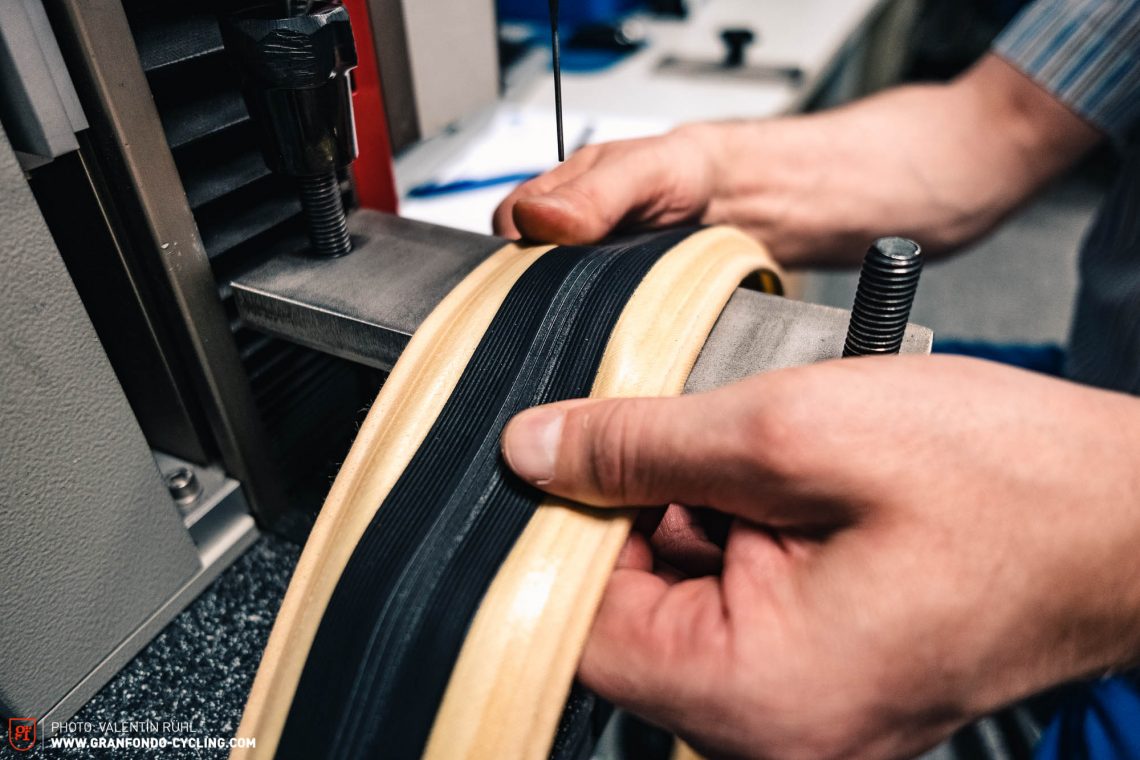
Our practical test took into account many crucial factors. We focused on the amount of grip the tire generates, which, combined with the handling, is responsible for how safe you feel on the bike. Our test loop included smooth roads, broken tarmac sections as well as narrow, wide and fast corners – both uphill and downhill. Besides testing in sunny weather, we also braved the occasional late summer rain. Throughout the test we asked ourselves the following questions. How does the tire accelerate and brake? How well does it roll in a straight line? How does it corner? How much confidence does the tire inspire?
Other important criteria were the damping and comfort the tires provide. How much feedback do I get from the surface I’m riding on? How much margin for error does the tire allow? How well does it deal with irregularities in the road surface? How stable and secure does it feel on the road? Finally, to find out which tire best suited which kind of rider, we evaluated factors such as value for money, looks and ease of installation.
Tops

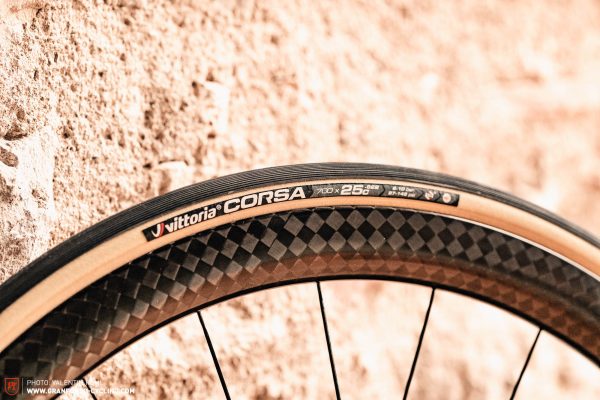
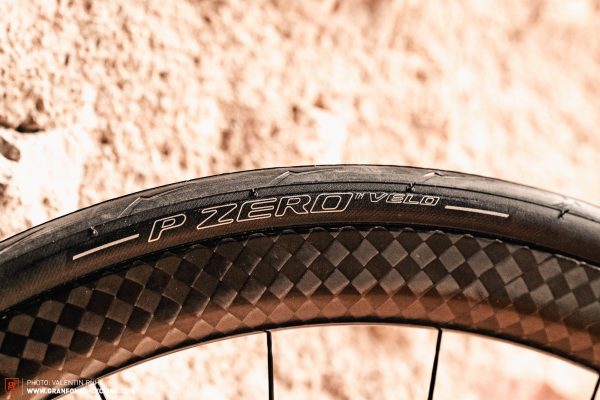
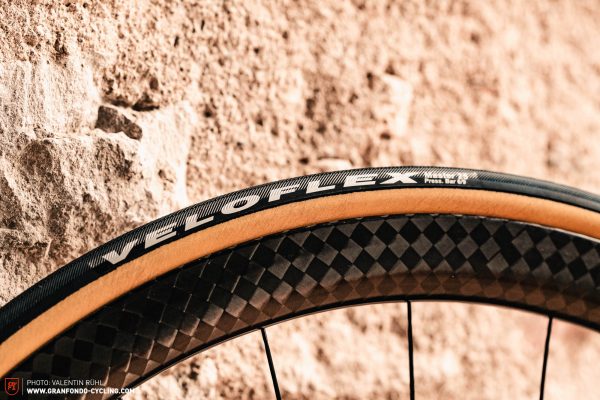
Flops
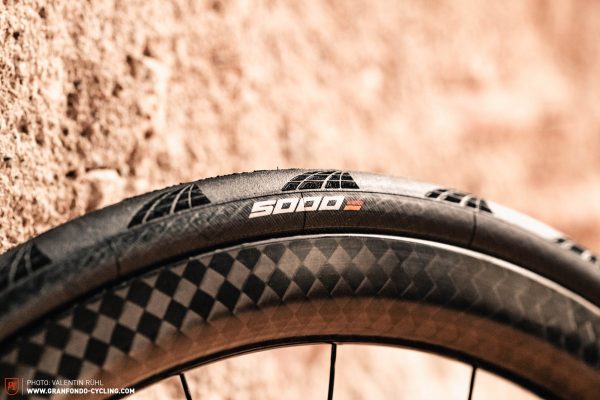

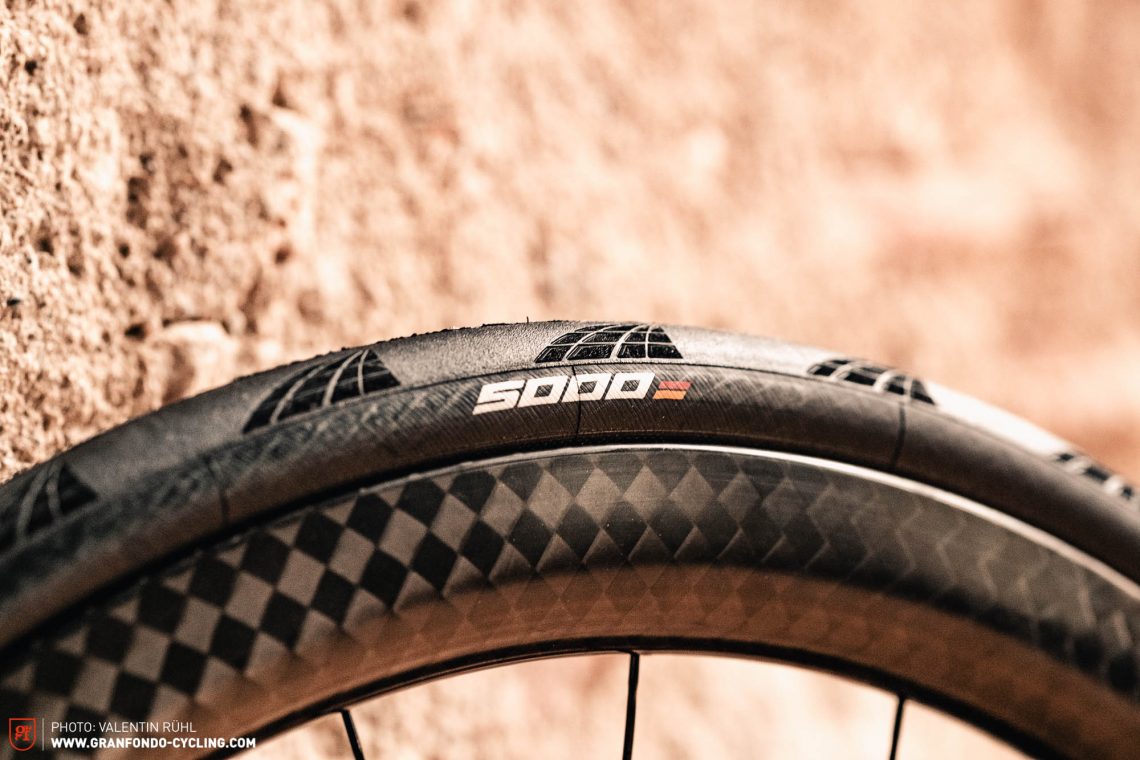
Key findings of the test
- Non-tubeless tires are easier to install – they’re much easier to seat on the rim bead.
- Comfort means safety, which in turn translates into speed: better ground control and more confidence allow you to push your limits
- When riding above the 15 km/h mark on the flats, air resistance is the greatest force you have to deal with and rolling resistance becomes less significant. That’s why it’s important to find a tire that is both fast and comfortable, allowing you to spend more time in an aerodynamic position.
- Open tubulars are way more comfortable than clinchers
- The level of comfort must match the character of the bike. A soft bike requires a more direct and harder tire than a super stiff aero bullet.
- Clinchers are more composed and forgiving at the limit. In extreme situations, clinchers are easier to control and open tubulars tend to break out more abruptly.
- Open tubulars are harder to install out of the box. However, once you break them in, they’re easier to mount.
- Not all open tubulars are approved for carbon rims, though this depends on the manufacturer! Always check the product descriptions!
- Only one tire in our test, the Veloflex Master, matched the specified width indications.
- After 12 tire changes, your hands start aching.
- No tire levers, rims or inner tubes were harmed in this test.
- Tan wall tires make you go faster. Just like cool socks and beards!
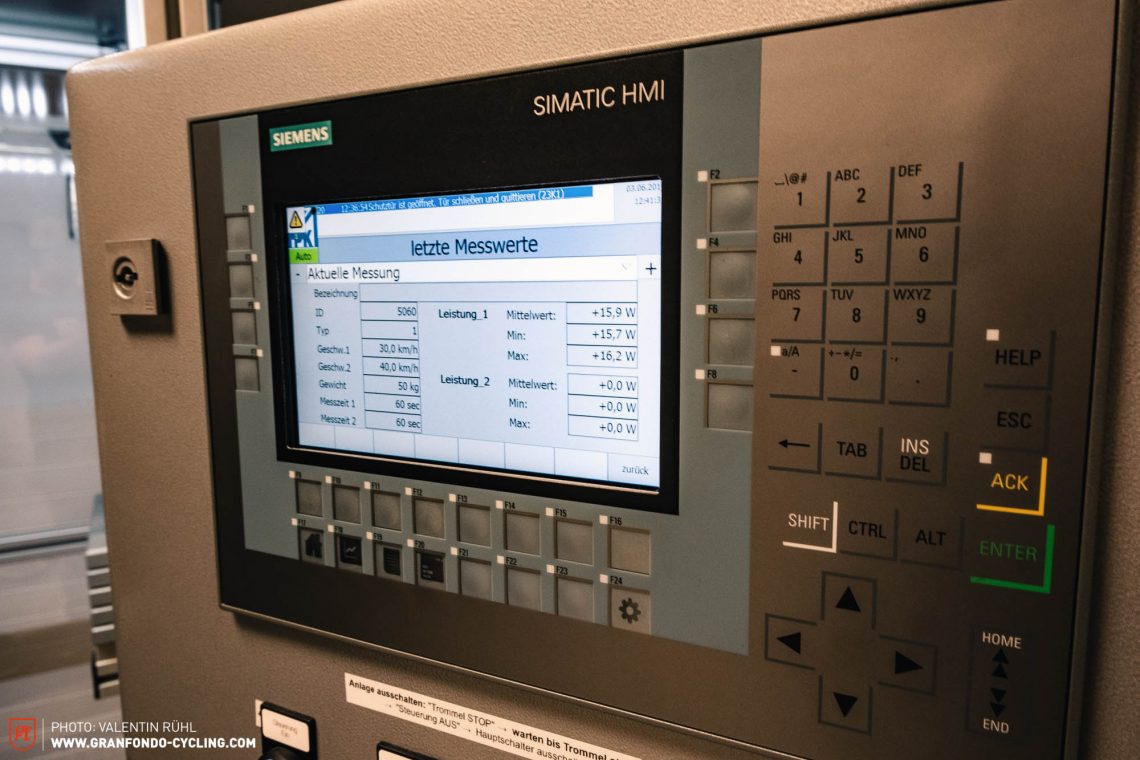
Which is the best race tire?
Due to the many different requirements and expectations of road cyclists, tires will always have to be a compromise. Some tires roll incredibly fast but lack in comfort and puncture resistance. Others are bombproof but fail to provide an acceptable level of comfort and rolling resistance. Our mission: finding a tire that combines speed, comfort and puncture protection and inspires tons of confidence in all riding scenarios and conditions.
The Vittoria Corsa G+ is the clear winner in our group test. With an outstanding level of comfort and good rolling characteristics, it inspires a high level of confidence on all surfaces. Despite some of the other tires doing better in the lab concerning puncture protection, the Corsa G+ was second to none in our practical test with its outstanding all-round performance and wins our coveted Best in Test.
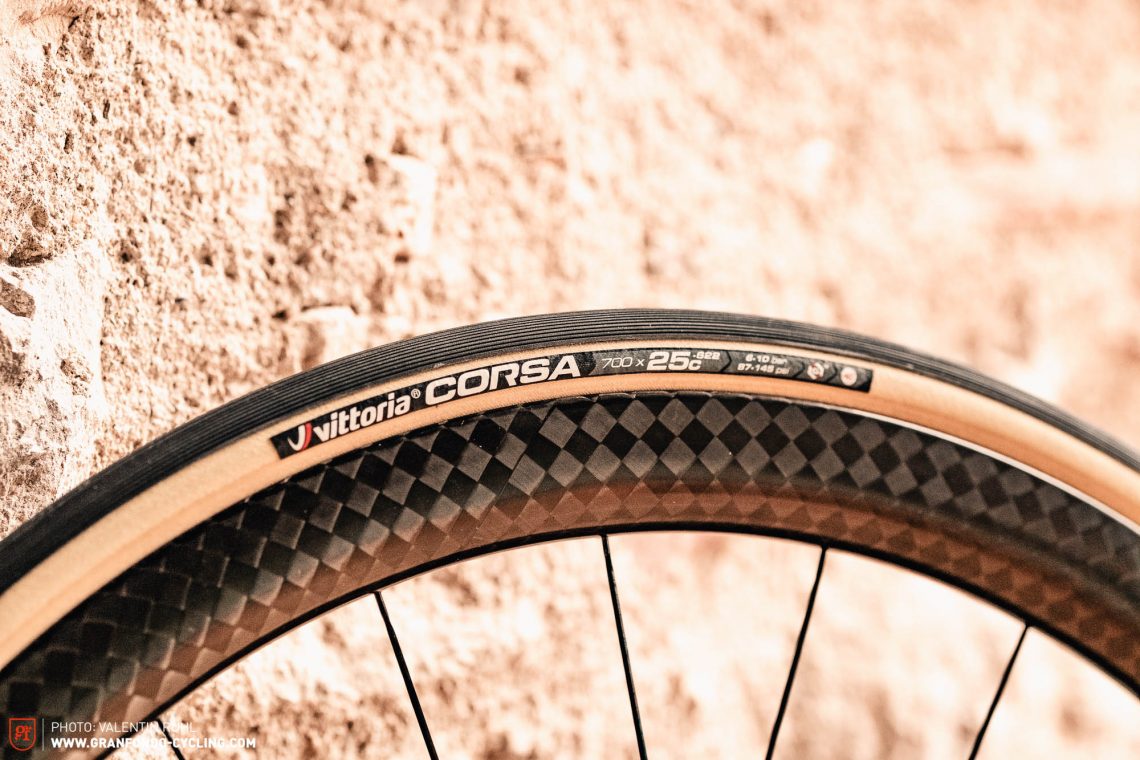
The Veloflex Master 25 mm deserves our coveted Best Value tip. At just € 29.95, the Italian tire is by far the cheapest model in our test yet still convinced our test riders with good grip and a low weight of 223 g (per tire). Moreover, the classic tan wall look and “Made in Italy” construction are a nice addition.
